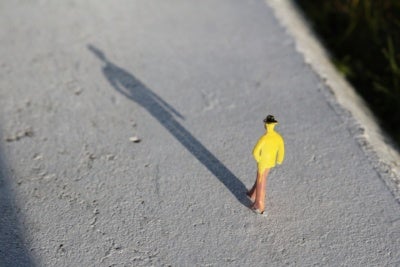![]() One of the most popular books of 2019 has been Atomic Habits by James Clear—a practical guide to a body of scientific research which, in recent years, has taken the personal development space by storm. An instant bestseller, the book is filled with insights, tips and suggestions for how to use the science of habit formation to achieve almost any goal or aspiration. My personal favorite is something Stanford psychologist BJ Fogg calls tiny habits.
One of the most popular books of 2019 has been Atomic Habits by James Clear—a practical guide to a body of scientific research which, in recent years, has taken the personal development space by storm. An instant bestseller, the book is filled with insights, tips and suggestions for how to use the science of habit formation to achieve almost any goal or aspiration. My personal favorite is something Stanford psychologist BJ Fogg calls tiny habits.
The idea behind tiny habits is that when setting out to achieve a goal or form a new habit, we usually set ourselves up for failure by thinking too big. Of course, it’s useful to choose a goal that’s lofty enough to be genuinely inspiring. But the trick is to kickstart the change process by identifying the very specific behavior that would bring about the realization of the goal, and then break it down into an action so small that it would be downright ridiculous not to do it. How small? “Stupid small,” says Fogg. For example, if I wanted to start exercising more, instead of committing to going to the gym for an hour every day, I should commit to doing two pushups every day. That’s it. And this is the action I would work to habit-ize.
 The research shows that tiny habits work because getting started is by far the most difficult part of cementing a new behavior. Our brains much prefer inertia to change, and they’re great at coming up with all sorts of reasons why tomorrow is the better day to start that new routine—especially if it feels daunting. But by placing the bar so low that it’s almost impossible not to do it, I can work around that problem, and fuel my motivation with small wins, which builds what psychologists call self-efficacy. By starting with a tiny exercise goal, there is a clear path to becoming what James Clear calls “the sort of person who works out every day.” A very big win indeed.
The research shows that tiny habits work because getting started is by far the most difficult part of cementing a new behavior. Our brains much prefer inertia to change, and they’re great at coming up with all sorts of reasons why tomorrow is the better day to start that new routine—especially if it feels daunting. But by placing the bar so low that it’s almost impossible not to do it, I can work around that problem, and fuel my motivation with small wins, which builds what psychologists call self-efficacy. By starting with a tiny exercise goal, there is a clear path to becoming what James Clear calls “the sort of person who works out every day.” A very big win indeed.
And so as I’ve set out to enact my 2019 resolution to become “the sort of person who connects meaningfully every day” I’ve decided to follow the advice of the habit scientists.
The first step in habit-izing a goal like “connecting meaningfully” is to identify the specific behavior I’m really hoping to introduce into my life. Connecting can take many forms, and it’s easy to see how a “stupid small” version of this could quickly become, well, meaningless. And so I’ve decided to start with the specific action of reaching out. But because relationships are a lot more organic than pushups, I’ll have to leave the definition open a little bit to include all the ways it’s possible to reach out—calling, texting, emailing, visiting, stopping to chat on the street—but the main thing is that I originate an interaction, and that I do it every day.
But here’s the thing about this action. Like pushups, reaching out is something we know is good for us, but somehow just isn’t as easy as it ought to be. We live in a culture where privacy is paramount, which can often make even the altruistic act of checking in on people feel intrusive. Does my colleague really want me to stop and talk with her as I pass by, or would she prefer that I just leave her alone? It’s amazing how often questions like this trip us up when we feel an inclination to reach out.
Not only that, but we are all so pressed for time these days that relationships are often the first thing to get squeezed. It’s not that I haven’t wanted to reach out to other people for the many years now during which I’ve felt disconnected, it’s just that it always seems to slip to the lowest spot on a crammed to-do list. I’ll get around to making friends and building relationships after all the important stuff gets done. Which, at the rate I’m going, might slate it for sometime in my late 60s.
 The fact is that our brains—conditioned as they are by culture and wired-in bad habits and a whole load of false assumptions they maintain—are apprehensive about doing something new and a little anxiety-provoking. Which makes it really tempting to just count waving as I drive by my neighbor or liking a friend’s Facebook post as reaching out. According to the science, one solution is to take away the loophole my corner-cutting brain is constantly trolling for by putting a clock on my goal. This provides a firm metric by which to measure whether or not I actually “did it” in a given day. Being able to celebrate a clear win is what will build self-efficacy, and encourage me to start devoting more time and effort to connecting.
The fact is that our brains—conditioned as they are by culture and wired-in bad habits and a whole load of false assumptions they maintain—are apprehensive about doing something new and a little anxiety-provoking. Which makes it really tempting to just count waving as I drive by my neighbor or liking a friend’s Facebook post as reaching out. According to the science, one solution is to take away the loophole my corner-cutting brain is constantly trolling for by putting a clock on my goal. This provides a firm metric by which to measure whether or not I actually “did it” in a given day. Being able to celebrate a clear win is what will build self-efficacy, and encourage me to start devoting more time and effort to connecting.
And so my goal this year is to spend fifteen minutes per day reaching out. It’s a small enough amount of time that I can wedge it into even the busiest day. And it’s a succinct enough action that I can achieve it by sending a few texts or emails. And when those efforts are well-received, I might find courage and motivation to engage more widely and deeply in the countercultural act of prioritizing relationship over privacy and productivity.
In the face of epidemic loneliness, rising deaths of despair, and bitter divisions threatening the very fabric of our nation, this may seem like a “stupid small” goal. But if the habit scientists are right, when facing an unwieldy challenge, the most important thing is just to find a place to start.

